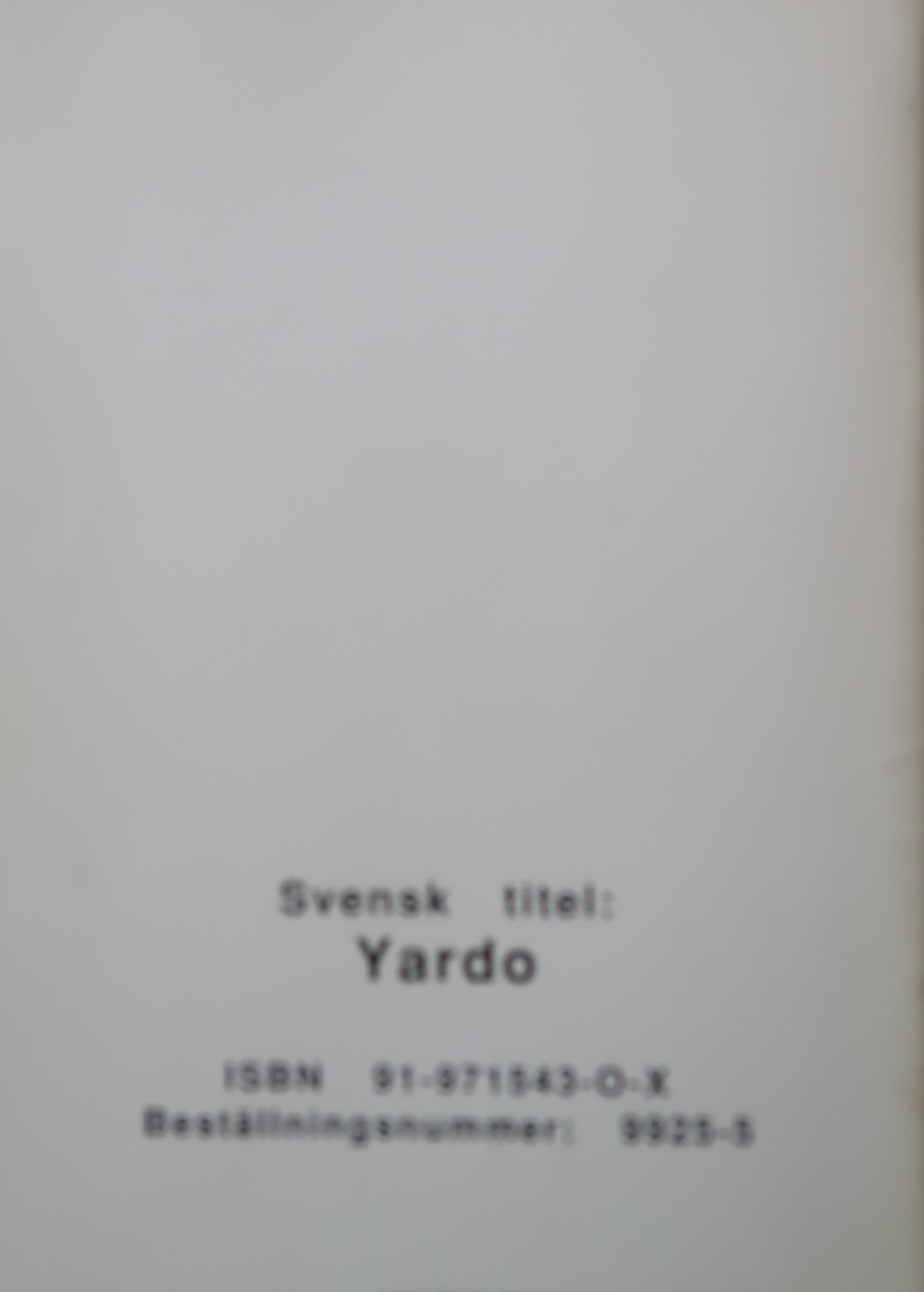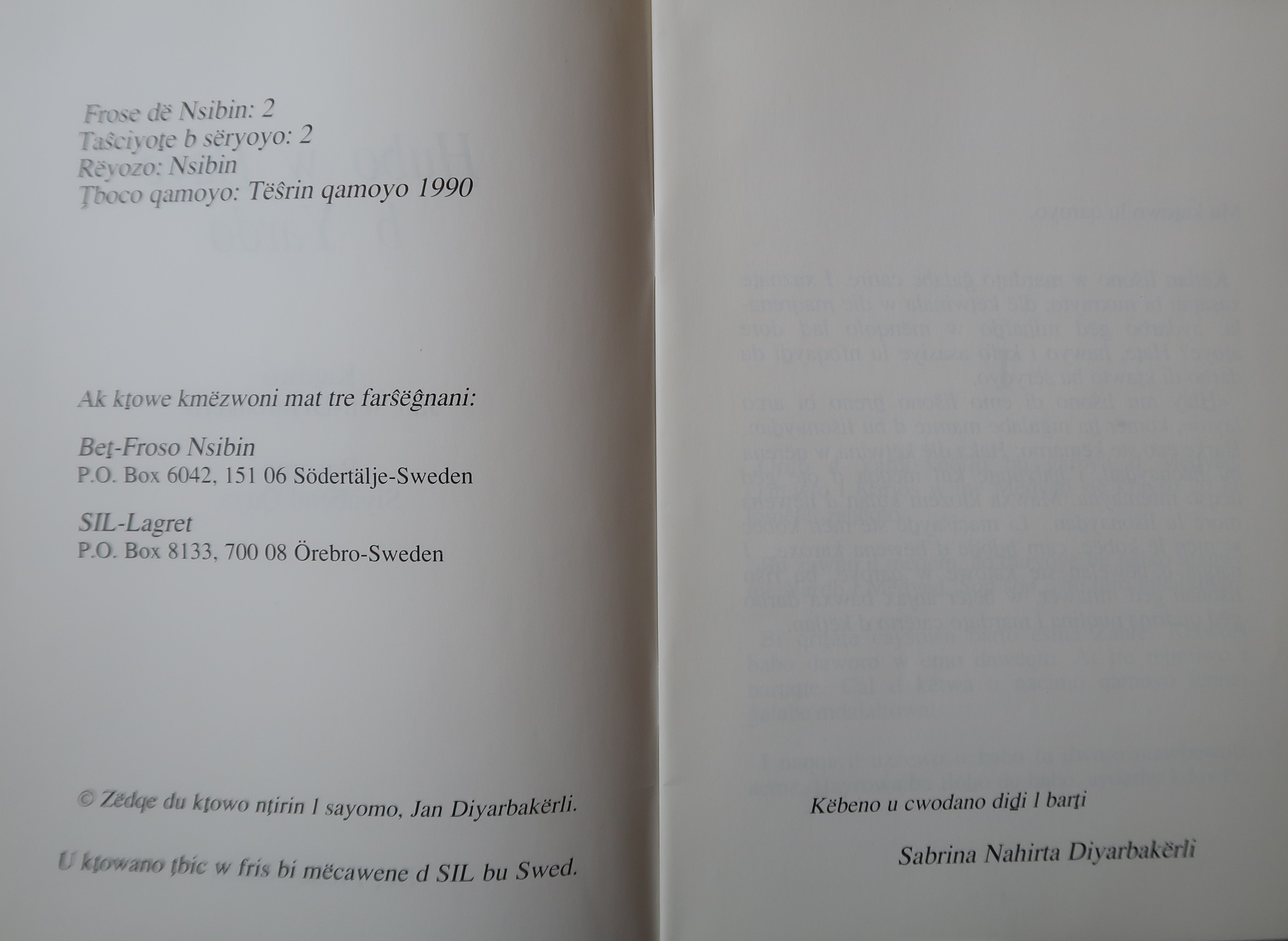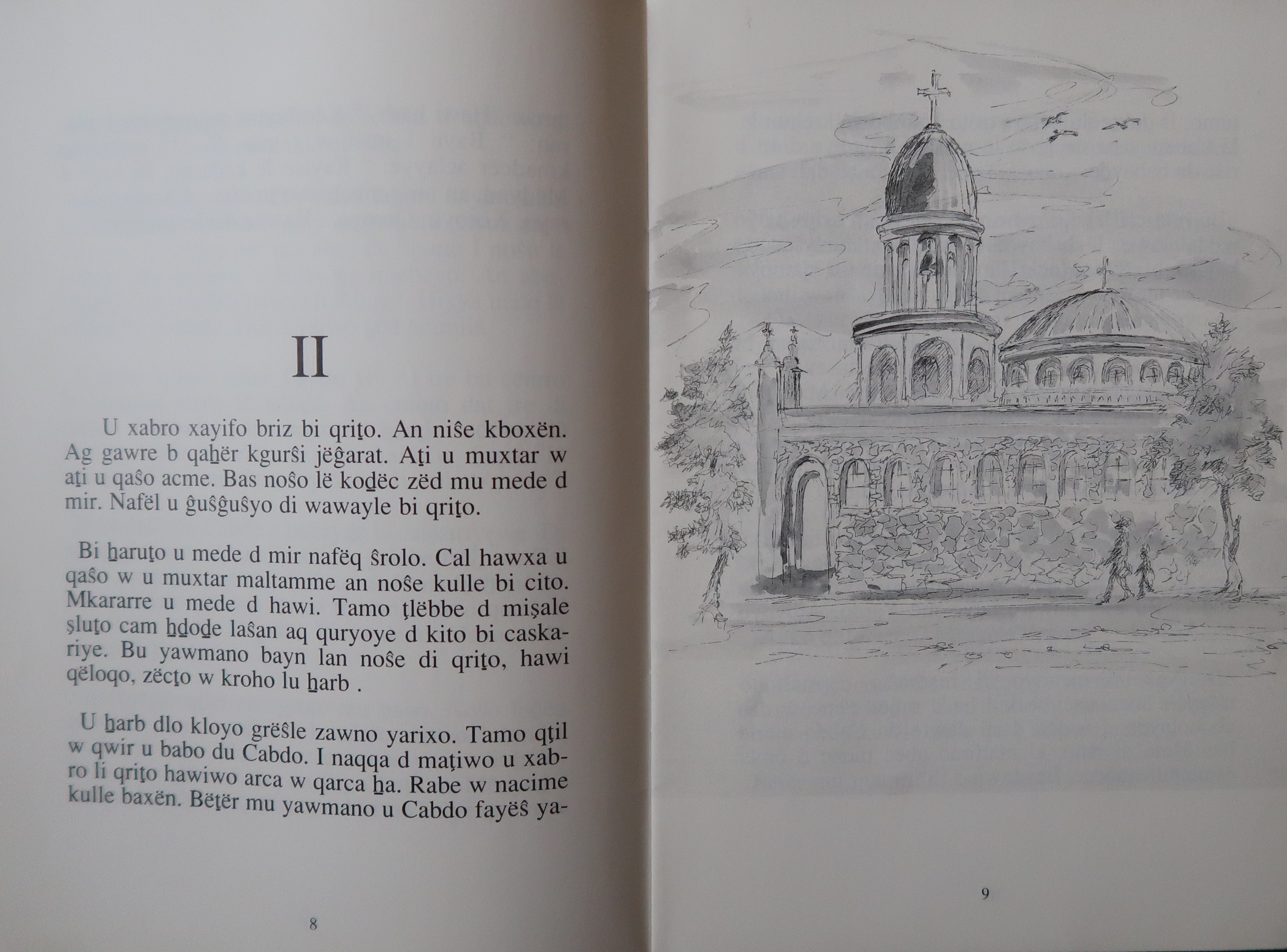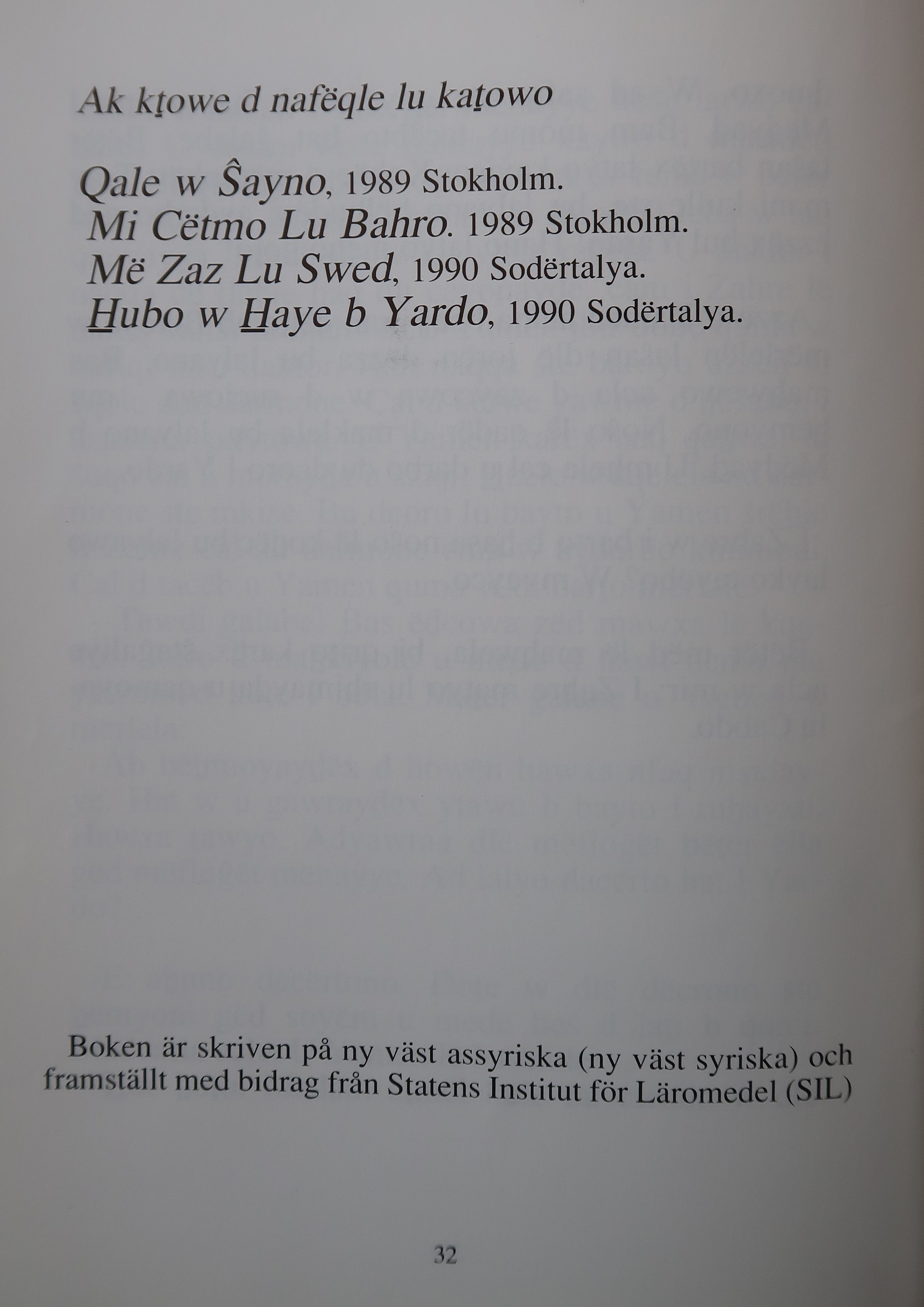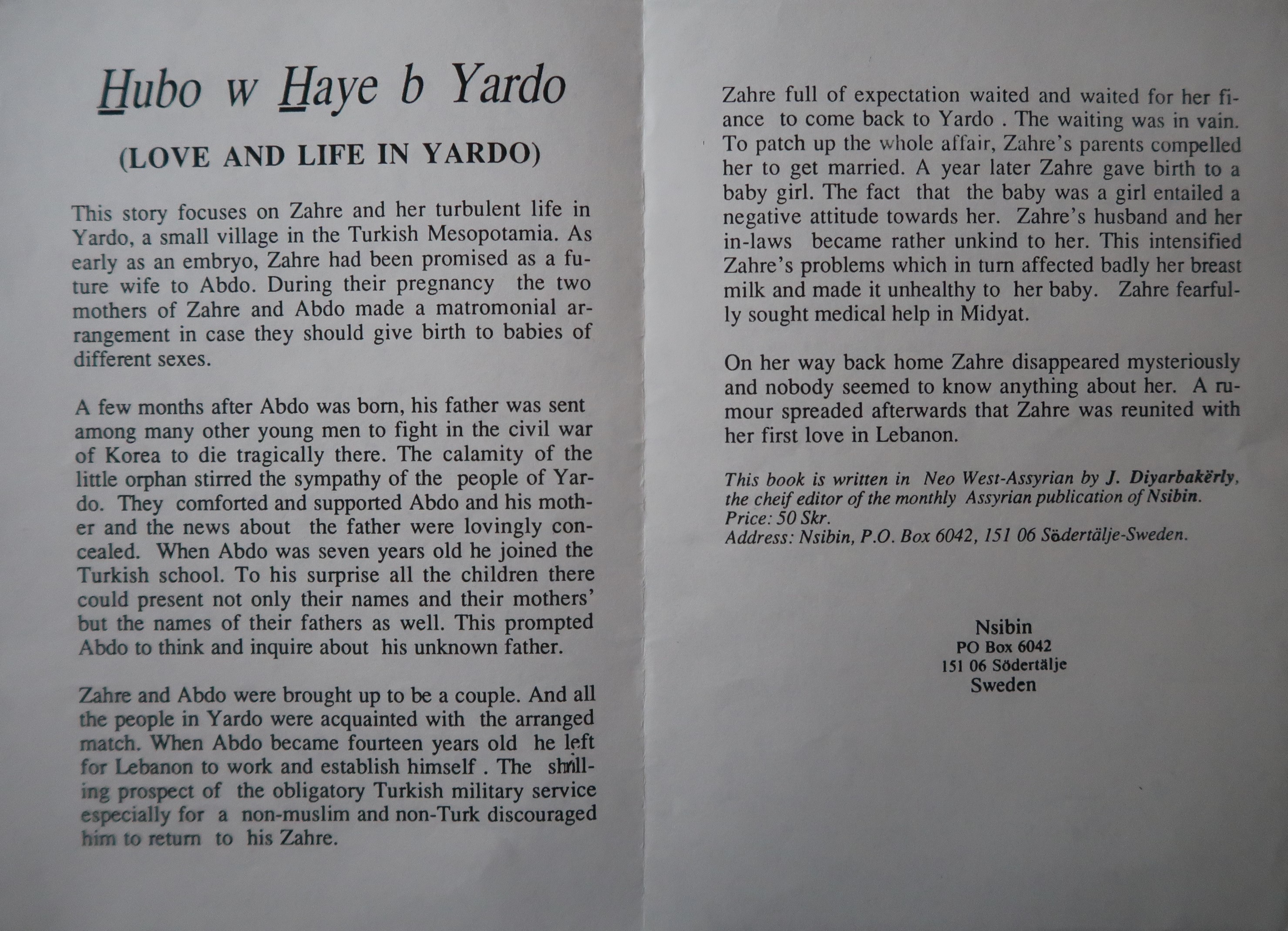Hubo w Haye b Yardo
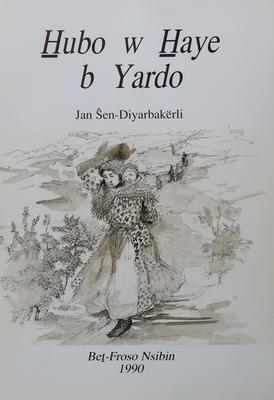
TITLE
Hubo w Haye b Yardo (English: Love and life in Yardo)
ALTERNATIVE TITLE
Yardo
Hubo w Haye b Yardo (English: Love and life in Yardo)
ALTERNATIVE TITLE
Yardo
AUTHOR NAME 1
Jan Ŝen-Diyarbakërli
AUTHOR NAME ORIGINAL LANGUAGE 1
PRINTED BY
Ljungberg Södertälje
PUBLICATION YEAR
1990
PUBLICATION COUNTRY
Sweden
PUBLISHING ORGANISATION
Bet-Froso Nisibin
EXTRA INFO
Not a church publication, and not explicitly religious (though some of the books in the series are)
LANGUAGE 1
modern (vernacular) Northwest Aramaic (Surait)
LANGUAGE 2
Swedish
GENRE 1
Fiction & Folk stories
GENRE 2
Youth
DESCRIPTION OF ILLUSTRATION
drawings by Siyabend Qaya
NR OF PAGES
32
CITATION
Jan Ŝen-Diyarbakërli. Hubo w Haye b Yardo, Love and life in Yardo. Södertälje: Bet-Froso Nisibin Södertälje & SIL-Lageret Örebro, 1990.
Jan Ŝen-Diyarbakërli
AUTHOR NAME ORIGINAL LANGUAGE 1
PRINTED BY
Ljungberg Södertälje
PUBLICATION YEAR
1990
PUBLICATION COUNTRY
Sweden
PUBLISHING ORGANISATION
Bet-Froso Nisibin
EXTRA INFO
Not a church publication, and not explicitly religious (though some of the books in the series are)
LANGUAGE 1
modern (vernacular) Northwest Aramaic (Surait)
LANGUAGE 2
Swedish
GENRE 1
Fiction & Folk stories
GENRE 2
Youth
DESCRIPTION OF ILLUSTRATION
drawings by Siyabend Qaya
NR OF PAGES
32
CITATION
Jan Ŝen-Diyarbakërli. Hubo w Haye b Yardo, Love and life in Yardo. Södertälje: Bet-Froso Nisibin Södertälje & SIL-Lageret Örebro, 1990.
IS A TRANSLATION
Unknown
FORM OF PUBLICATION 1
Paperback with ISBN
ISBN NUMBER
91-971543-0-X
PUBLISHED BY
Bet-Froso Nisibin Södertälje & SIL-Lageret Örebro
PUBLICATION CITY
Södertälje
CHURCH 1
Syriac Orthodox Church
CONTENT DESCRIPTION
A children's (youth?) story about Zahre, a woman in Yardo, a small village in Mesopotamia.
GENERAL COMMENTS
Part of a series of (at least) four books by the same author, the first two (1989) published by SIL, the two others (1990) jointly with an Assyrian/Suryoyo publisher: Bet-Froso Nsibin. From the foreword in the two 1989-publications, all in a latinized version of the vernacular Syriac language (Turoyo) [ii] provides a few lines on this ambitious but mostly unsuccessful project (as far as the introduction of this latinized version was concerned): "A project for the development of educational aids in Turoyo is being carried out by Assyrian/Syrian staff at the National Swedish Institute for Teaching Material (SIL). Dr. Yusuf Ishaq acting as scientific advisor. We hope that this story will enable students to make closer contact with their own culture. We also believe that it can help reinforce understanding between parents and children." This and the other 1990-publication include an insert with an English summary of the story and the regulations of the Nsibin organization. It refers to its main aim: “modernising the classical Assyriac (Syriac, Aramaic, Chaldean) letters and dictionaries by Latinising them in a similar fashion to the alphabet described in (SÖ:s TOXU QORENA 1982, Stockholm-Sweden). This means a concentration on the spoken language rather than the written one." Note that the stories are clearly not aimed at young children, but perhaps at teenagers learning the language.
Unknown
FORM OF PUBLICATION 1
Paperback with ISBN
ISBN NUMBER
91-971543-0-X
PUBLISHED BY
Bet-Froso Nisibin Södertälje & SIL-Lageret Örebro
PUBLICATION CITY
Södertälje
CHURCH 1
Syriac Orthodox Church
CONTENT DESCRIPTION
A children's (youth?) story about Zahre, a woman in Yardo, a small village in Mesopotamia.
GENERAL COMMENTS
Part of a series of (at least) four books by the same author, the first two (1989) published by SIL, the two others (1990) jointly with an Assyrian/Suryoyo publisher: Bet-Froso Nsibin. From the foreword in the two 1989-publications, all in a latinized version of the vernacular Syriac language (Turoyo) [ii] provides a few lines on this ambitious but mostly unsuccessful project (as far as the introduction of this latinized version was concerned): "A project for the development of educational aids in Turoyo is being carried out by Assyrian/Syrian staff at the National Swedish Institute for Teaching Material (SIL). Dr. Yusuf Ishaq acting as scientific advisor. We hope that this story will enable students to make closer contact with their own culture. We also believe that it can help reinforce understanding between parents and children." This and the other 1990-publication include an insert with an English summary of the story and the regulations of the Nsibin organization. It refers to its main aim: “modernising the classical Assyriac (Syriac, Aramaic, Chaldean) letters and dictionaries by Latinising them in a similar fashion to the alphabet described in (SÖ:s TOXU QORENA 1982, Stockholm-Sweden). This means a concentration on the spoken language rather than the written one." Note that the stories are clearly not aimed at young children, but perhaps at teenagers learning the language.
